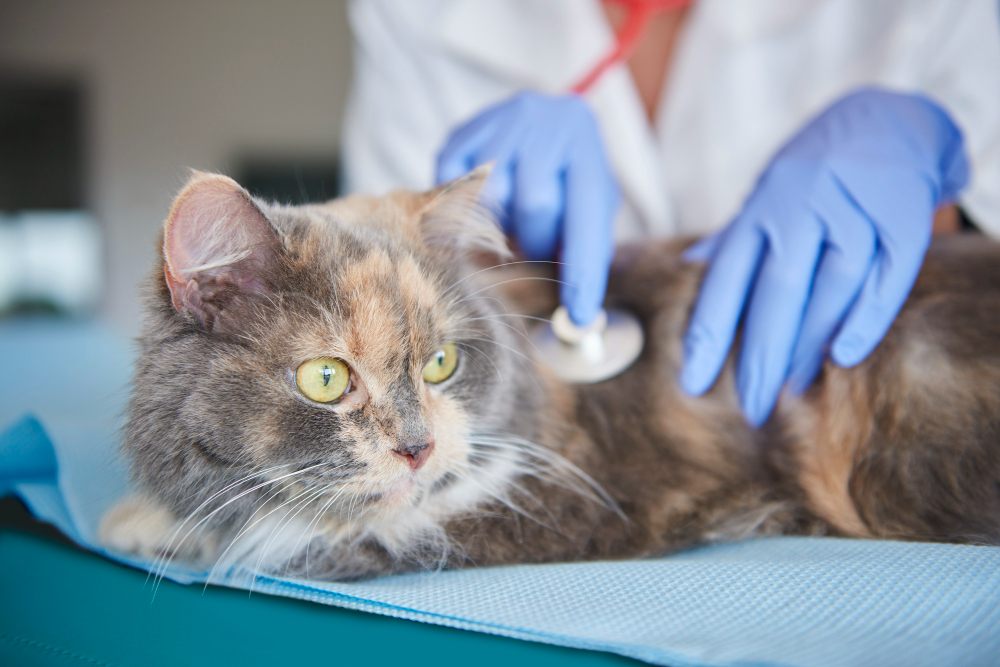Cats are not just pets; in many homes, they are valued members of the family that offer emotional support and companionship. Considering the joy and comfort, one must also bear in mind that at the end of the day, like any other living creature, cats can fall prey to a number of diseases related to health. Conscious of the risks, responsible pet owners should steer them to recognize the signs of these way too common diseases thereby making a dramatic difference in their quality of life.
The Duel Threat: Feline Immunodeficiency Virus (FIV) and Feline Leukemia Virus (FeLV)
Another of the most common infectious diseases found in felines has been Feline Immunodeficiency Virus (FIV), and also Feline Leukemia Virus (FeLV). They both are highly transmissible through direct contact with an infected feline, each one known for posing a severe threat to the cat’s immune system.
FIV: The Silent Invader
Although it might spread in shared food and water bowls or even through contact with contaminated saliva, FIV is mostly transmitted via bite wounds. Cats may not show symptoms for years but eventually the virus weakens their immune system making them easily prone to secondary infections as well as other complications. The symptoms are often non-specific and include fever, weight loss, lethargy, elevated liver enzymes, frequent infections, and anemia. This makes regular testing FIV, especially among cats that are in frequent mingling with others important to ensure early detection and management.
FeLV: The Attacker of No Systems
FeLV comes out as a much elusive subtype since not only can it be spread through shared objects but also respiratory secretions, blood as well as urine. Symptoms with FeLV may differ, but they will generally include weight loss, fever, lethargy, anemia, and respiratory issues. Very much like FIV, early detection through regular testing may help manage the disease to prevent it from spreading into other cats. Beware the quiet dangers in feline appetite that could signal these diseases.
Respiratory Troubles: Feline Infectious Rhinotracheitis (FIR)
Feline Infectious Rhinotracheitis (FIR) is a highly contagious respiratory disease caused by the Feline Herpesvirus. It mainly affects young cats, especially kittens. First signs usually entail repetitiveness in sneezing, nasal cavity congestion, as well a discharge from both the eyes and nares. Progressively, the affected cats may exhibit pyrexia, demonstrate lethargy as well as anorexia. In severe cases, life-threatening sequelae such as pneumonia may develop characterized by dyspnea and coughing.
Diagnosis is usually done either through the blood studies or study on respiratory secretions. Treatment protocol in case a patient develops the disease is usually aimed at relief of symptoms such as nasal congestion, support with fluids, and antivirals for treatment of the disease course. It should be remembered that even though most of the cats will have recovery from FIR, there shall still be a certain percentage among them having chronic FIR complications such as nasal obstruction or recurrent respiratory problems persisting.
Numerous Other Common Ailments
Though, FIV, FeLV, and FIR are crucial health threats to your feline pal, they aren’t the only problems. Here’s a list of other conditions your cat may be affected by:
- Gastrointestinal and Renal Issues: Intestinal obstruction and chronic kidney disease are prevalent. The latter often necessitates long-term management. Learn more about managing renal disease.
- Urinary and Liver Complications: UTIs and liver diseases are related and can be marked by such things as excess urination or high liver enzymes respectively.
- Ocular and Auditory Problems: Common problems in the cat’s eye include conjunctivitis and glaucoma. Ear problems such as middle ear infections are also common in cats.
- Age Related Disorders: Among the disorders related to age, hyperthyroidism is most commonly seen which may show symptoms like weight gain or increased appetite.
Take Proactive Measures in Keeping Your Feline Healthy
Prevention and veterinary care go hand-in-hand in preserving your cat’s health. One of the front lines against many of the common diseases is keeping vaccinations up to date. Minimize contact with infected animals and ensure a clean living environment could also minimize the risk of disease. If you are getting a new cat to live in your home, make sure that it is tested for the common diseases like FIV and FeLV before introducing them to your already existing pets.
On the other hand, early detection and management of a plethora of conditions is a function of regular veterinary checks. A comprehensive medical examination that directs a patient through blood work and x-rays can avail an accurate diagnosis. These visits aren’t just for when your cat is obviously sick, it is very important for checking on general health and also catches potential issues before it becomes a serious problem.
Adopting a combined proactive approach of preventive measures along with regular veterinary care will enhance your cat’s quality with regards to life and longevity factors.
Conclusion: The Cornerstones of Feline Health and Longevity
The first step in making sure that the cats are healthy is understanding several health problems that they are beset with. From infectious diseases like FIV, FeLV, and FIR to a range of common others, knowing is key. This, when added to pro-active measures like vaccinations and minimizing contact with affected animals, can prevent diseases to a significant extent. Comprehensive medical examinations by veterinarians at regular intervals are as important as early detection and proper handling of problems if any. By taking a holistic approach-a combination of preventive care and timely medical intervention for your cat, you can greatly enhance the overall quality of life for it. Said in another manner – by so doing, besides merely providing love and shelter, you’re also ensuring a healthier and longer life for your feline companion.

